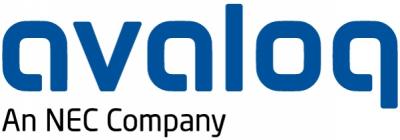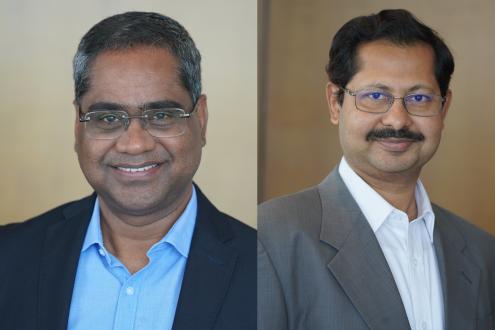Empowering the Banking Sector to Deliver a More Powerful & Comprehensive Wealth Management Offering

May 29, 2023
Hubbis partnered exclusively with banking and wealth management technology specialist Avaloq for a roundtable discussion in Manila on April 26 at Raffles Makati. We enjoyed views from 13 leading figures in the Philippines wealth management industry who offered their frank observations on the evolution of the business and the enhancement of the investment platform.
Avaloq was represented by Vibhooti Chaturvedi, Regional Sales Director and Pradipta Satapathy, Head of Project Delivery, APAC & MEA. Together with the guests they addressed some key questions on the evolution of wealth management in the country, the digital journey to date and ahead, the development of their platforms, processes, and products, and the democratisation of wealth as the mass affluent market expands across the populous nation.
Most importantly, they focused on the needs and expectations of the clients and how the smart alignment of the relationship manager (RM) and investment advisor capabilities, with the broader more digitally empowered wealth offering, will help boost revenues and profitability.
A brief word on Avaloq
The Swiss-based and now Japanese-owned technology and software specialist Avaloq provides a comprehensive banking software solution designed to meet the diverse needs of various market segments within banks and wealth management firms. Their integrated suite of components is purpose-built to address the specific requirements of each market segment. Avaloq delivers these solutions through on premises, software as a service (SaaS) or banking operations (BPaaS) models, which enable financial institutions to choose the right model that ideally fits their business.
Avaloq’s front-to-back software and services are sold currently to over 160 financial institutions around the world. Their clients include private banks, wealth managers and investment managers, as well as retail and neo banks. Avaloq is a subsidiary of Japan’s NEC Corporation, a global leader in the integration of IT and network technologies. Avaloq prides itself on providing best-of-breed solutions, covering all aspects of the private banking and wealth management business for clients’ front, middle and back offices.
For more information and a deeper understanding of the firm and its wealth offering in the region, see www.avaloq.com
Key Findings & Insights at a Glance
There is immense growth potential and indeed momentum in the Philippines’ wealth management market as a wider array of competitors expand their traditional HNW and UHNW offerings to make the onshore wealth offering more appealing and diverse and to help keep more private wealth onshore.
An increasingly diverse group of players are positioning themselves to capture the high-growth mass affluent market, which primarily consists of younger generations aged 40 and below. These clients are expanding their careers, businesses, and investment portfolios for their futures.
Amongst the key challenges, the local wealth market needs more products, more talent (which is currently in very short supply relative to the opportunity), more investor awareness and education, and more support from the regulators, which experts believe is increasingly forthcoming.
The market and the growth potential mean there is room for intensifying competition, and for identifying niche segments.
Transparency in the wealth management offering is vital, as clients of all ages, especially the younger generations, expect to know precisely how they are being charged, and why.
Digital transformation is being driven by client needs and expectations, as well as by the exigencies of the banks and other financial institutions. Technology innovations in banking will build the much-needed efficiencies, scale and enhance client-centricity and experience.
Clearly, younger clients want to be more digitally self-sufficient than older clients, but both appear to value human connectivity, hence the hybrid wealth model that is now evolving is set to develop for many years ahead.
Investment in digital excellence and efficiencies is not a luxury, it is a necessity in order to compete and stay ahead in the game. Getting it right is far from easy, and requires thought, consultation internally and externally, proper planning and the commitment to see things through to their proper conclusions.
The future looks good – the experts agreed that the wealth market in the Philippines is in its relative infancy compared to more developed ASEAN markets, but the demographics, the economic momentum, the competitive environment, the embrace of digitisation and the rising support from the regulators all augur well for many years of strong growth ahead.
The Key Insights & Observations in More Detail
The opportunities are very significant in the Philippines, with the onshore wealth offering now gaining momentum
The in-country head of wealth for a leading ASEAN regional bank explained that their wealth offering in the Philippines began only a few years ago as a natural offshoot from the banking business they had then been running in-country for over 20 years. The wealth business now competes directly with the major domestic banks.
The challenge, she explained, was shifting from a very retail focus on the core banking business of savings to the wealth management mindset, hiring the right type of RMs, educating the clients on wealth management and what the bank offered, introducing them to investment products that were largely new to them, introducing funds and onboarding third-party funds.
“We even had to sell the whole concept to the branch partners because from the head office here we were seen as competitors to the branches,” she added. “But the big picture is the goal as wealth in the Philippines is growing so fast across the nation. We are now four years into this journey, and we have grown fast, but it’s a never-ending process of learning and constantly building and upgrading the team.”
Another banker concurred, stating that the market is big enough for the intensifying competition, and will continue to grow. “When you look at the asset management and wealth management industry in the Philippines, it is really at its early stages, and there is plenty of room for competition,” he stated. “And there are key niches that, for example, as a smaller institution, we can focus on that offer interesting opportunities as the market at large develops. In short, the wealth industry is at that tipping point and we project faster growth ahead, and then it will begin to grow very rapidly.”
Client behaviour and expectations are changing, and regulators are more accommodating
A senior banker representing a major domestic universal bank highlighted the extent to which client behaviour is changing, first with a major drive to digital during the pandemic and now with seemingly everyone with an e-wallet for their general activities. “Clients want everything faster, they want to be able to transact easily, they don’t want to line up in a branch to make a simple transaction, but there is demand for the hybrid model as they still also want to have that physical conversation, so it is not a complete reliance on digital, as you would perhaps expect on some other markets.”
He added that the regulators are more accommodating to facilitating developments they have wanted to introduce for the mass affluent market, for example, e-wallets access to investments. He said the regulator has advanced the way that they are managing things, and the central bank is even leading the way towards an open finance framework, so is perhaps even a little more ahead than most of the banks. “As yet,” he explained, “not many of the institutions are ready yet to completely embrace open architecture, and yet you have the central bank here trying to establish the framework and trying to get it moving. In general, we are encouraged on the regulatory front.”
Another expert agreed and pointed to new and much-improved apps on offer, but to make those apps effective of course the banks also need to constantly and significantly upgrade their platforms and technology. “The banks are working hard to transform the way they do business, in recognition of the changes of the client requirements, and in recognition of the advancements in technology that is now available,” he said.
Another expert agreed, adding that there is noteworthy diversification of products and advice and distribution channels for new and existing clients.
Talent is in short supply, so banks and other wealth management competitors need to be proactive in their methods to boost the skills pool
A senior local banker explained that talent acquisition and retention are remarkably tough. “It is very difficult trying to attract the right talent, as the competitive environment is quite cutthroat, and everybody has the same problem,” she reported.
To counter these shortfalls, they tier clients so that they can allocate RMs to fit their profiles. In general, she explained that they need a lot of training, especially at the higher end of the client segments.
“It takes a lot of commitment and time,” she reported. “Every Friday, for example, we have a teach-in on regulations, laws, estate planning services, family codes and practices. So, we will continue to largely develop internally. At the same time, we are working on the clients becoming more independent, helping them to be confident in doing things themselves.” And of course, that means that the technology on offer needs to be sufficiently sophisticated to accommodate that evolution.
A banker explained that they had been investing substantially in their private wealth advisors across their branch network, training them, retooling and upskilling them so that they become the bank’s ambassadors in the field.
Other bankers and attendees agreed, noting that talent is increasingly expensive, and the growth potential is such that there is a constant shortage at all levels.
The wealth management market across Asia is developing and evolving apace
Another expert offered a more pan-ASEAN view, explaining that the major thrust for so many banks is the buoyant and rapid-growth mass affluent market where there is intensifying focus on investing and saving for the family and their futures. He said this is common across the different ASEAN markets, where there is robust GDP and private wealth expansion, and where there is such a large demographic in the under-40 category where careers and wealth and businesses are growing so strongly.
“These people are interested in looking towards the future planning aspects in ways and with a commitment we would have not seen 10 or 20 years back,” he reported. “All of their banks and institutions are focusing on the wealth continuum journeys, getting engaged with their clients as early stages, helping get them in their life goals in their own financial planning and then taking this entire journey as a long-term partnership.”
There is far greater financial inclusion, far more focus on financial literacy, and a far more digital and accessible offering.
A banker agreed, adding that it is also vital to understand both the clients and the competition. He said they must be entirely transparent in their offerings, their fees, and client-centric in terms of their dedication to client welfare and wealth consolidation and growth. “If you establish that, then you have a client for life, but the moment you break that arrangement, you lose the client for good,” he stated.
Another banker explained that their model focuses on the HNW market historically, but their expansion into the mass affluent space is all about seizing opportunity today, but also engaging with these younger, less wealthy but up-and-coming clients, a good number of whom later on might migrate to the ranks of HNWIs.
To be profitable, you must invest in people, technology, systems, and processes as well as evolve the mindsets
“You must spend to make money,” said one expert. “We need to educate and improve skills across the board to keep clients and win more. Clients expect information, ease of transacting, and easy and manageable access to ideas and data, and for the wealthier and perhaps older clients, you need more personalisation, even down to the size of the typeface for documents we send out to people who might, for example, be in their 80s.”
Digital transformation is not a luxury, it is a must for those wanting to connect to the next wave of clients, but also to upgrade the offerings for existing clients and for the RMs and advisors to deliver a more relevant and better proposition
Expanding on these comments, another banker explained that in trying to engage with existing clients and the nextgens, they have been investing significantly in their digital transformation.
“The younger generations are more digital natives,” he said, “and they expect more in terms of digital capabilities, access to digital channels, and so on. And we realised that our existing systems would not bring us forward to servicing these requirements. We are very soon going live with new digital offerings on our platform, and the advances we believe will be well adopted by the nextgens but also by the older existing wealthier clients, who are all far more receptive now to digital interface and engagement, and to digital communication, statements, and so forth.”
The elevation of the capabilities and capacity of the RMS is also essential, especially with the shortage of talent, and the need to serve more clients per RM, and to boost the share of wallet from each client.
A banker explained that there are significant challenges around enhancing the platform, but that this is a necessity for future competitiveness and growth. She said rapid transformation can be supported by cloud-based protocols for overcoming shortages of hardware and systems at the core of the bank, and there needs to be a greater focus on consolidated information for clients, and also for the RMs and advisors and management so that they can then work more closely with those clients.
“A cloud-based platform is agile and helps with self-servicing,” she explained. “This is a key part of the platform transformation, and digitalisation, which is happening in many banks to serve these clients faster and better. It is also very important to achieve a uniform type of approach and process across different teams and even divisions.”
Another expert picked up on that last comment, noting that uniform processes across the divisions, for statements, for each different client is challenging but very important. “How also do you put a digital front across the client segments, across the divisions, so that they see the same data in the same way?” he pondered. “We take this into account on any project, and then timing is also important, as clients need delivery and deployment rapidly.”
A banker agreed and explained that agreeing on the appropriate processes across a major bank and across divisions was a vital pre-requisite to engaging a wealth technology firm such as Avaloq for their digital transformation and platform upgrades.
“We all had to determine, decide and agree, and we made sure we have the conviction to really conform and relay to the client the changes that we will be making, there will be acceptance across all business units,” she explained. “This helped us achieve our goals at a record pace and with great accuracy.” They also noted that such close collaboration with their digital transformation partner was essential to the speed and success of the project. One team, one goal and one successful outcome, they said.
An expert noted that a Singapore bank, as a digital banking and digital wealth leader in Asia, had been working with Avaloq for some years and had decided to bolster their digital transformation by having one private banking system for Hong Kong and Singapore for their entire wealth platform. He said that type of approach works well for banks in the Philippines, so they are able to cater to different segments from the same platforms, and to allow the RMs and advisors across different wealth segments to employ common technology and interface.”
He said that armed with APIs, the offerings can be then tailored to the demands of different units within the bank to offer more agility on top of the common technology and platform.
“That is exactly what we are doing with our platform,” a banker reported. “We call it the CAPI, the Community API layer, to accommodate the need for clients to have different data in different ways, internal and external, and in real time.”
Gazing into the crystal ball, there are some exciting and also challenging developments ahead in the Philippines
“We are at the tipping point, as the development of the wealth management market and ecosystem are advancing apace and snowballing,” a banker concluded. “We're expecting a lot more investors across different segments, especially in the mass affluent segment. That means more business, higher volumes, and exciting opportunities. Our base case scenario is looking at least a 7% compound growth in the wealth management market over the next decade, which would more than double our current numbers.”
Accordingly, he said the wealth industry must continue on its path of evolution and change, moving from the purely transactional, digitally transforming, elevating talent and skills, adding value, improving outcomes for clients and cultivating client ‘stickiness’.
He said a decade from now, we will be in a much bigger market, the demands of the investors and the clients will continue to rise, and there will be more value-added products and services.
“We can expect deeper local markets, a wider range of equity and fixed income products, increased availability of private assets, and greater accessibility to investments like commercial real estate. In the midst of these changes, RMs will continue to play a crucial role, engaging more consistently and effectively in the evolving wealth management market in the Philippines.”








